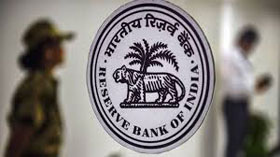The Reserve Bank of India has taken several measures of late to enable monetary policy transmission. Substantiate.
Sakshi Education
By Srirangam Sriram, Sriram's IAS, New Delhi.


Monetary policy transmission is essentially the process through which the policy action of the central bank is transmitted to the objective of making more liquidity available at the appropriate rate, investment, consumption, stable inflation and growth.
The policy action consists of changes in the policy rates of repo; change in the ratios of SLR and CRR; open market operations mainly.
In a developing economy like ours with large part of the society being financially excluded, the transmission mechanism is not as effective as it is in the developed countries. Therefore, the RBI is targeting the transmission even more. The following steps have been taken recently:
Under Targeted Long-Term Repo Operations (TLTRO), banks can invest in specific sectors through debt instruments (corporate bonds, commercial papers, and non- convertible debentures (NCDs)) to push the credit flow in the economy. It is called 'Targeted' LTRO as in this case, the central bank wants banks opting for funds under this option to be specifically invested in investment-grade corporate debt.
Under Operation Twist, Reserve Bank of India (RBI) bought long term government bonds and sold short term in order to ensure that the yields on both types come closer. Mere rate cut is not transmitted across the market and so this operation is required.
Incremental CRR was made zero in a targeted way. Reserve Bank of India (RBI) offered banks Cash Reserve Ratio (CRR) exemption for five years for incremental credit disbursed to automobiles, residential housing, and micro, small and medium enterprises (MSMEs) between 31 Jan-31 July, 2020.
 In 2019, RBI had directed banks to move all floating rate retail and small business loans to an external benchmark to quicken transmission of interest rates.
In 2019, RBI had directed banks to move all floating rate retail and small business loans to an external benchmark to quicken transmission of interest rates.
The policy action consists of changes in the policy rates of repo; change in the ratios of SLR and CRR; open market operations mainly.
In a developing economy like ours with large part of the society being financially excluded, the transmission mechanism is not as effective as it is in the developed countries. Therefore, the RBI is targeting the transmission even more. The following steps have been taken recently:
Under Targeted Long-Term Repo Operations (TLTRO), banks can invest in specific sectors through debt instruments (corporate bonds, commercial papers, and non- convertible debentures (NCDs)) to push the credit flow in the economy. It is called 'Targeted' LTRO as in this case, the central bank wants banks opting for funds under this option to be specifically invested in investment-grade corporate debt.
Under Operation Twist, Reserve Bank of India (RBI) bought long term government bonds and sold short term in order to ensure that the yields on both types come closer. Mere rate cut is not transmitted across the market and so this operation is required.
Incremental CRR was made zero in a targeted way. Reserve Bank of India (RBI) offered banks Cash Reserve Ratio (CRR) exemption for five years for incremental credit disbursed to automobiles, residential housing, and micro, small and medium enterprises (MSMEs) between 31 Jan-31 July, 2020.
 In 2019, RBI had directed banks to move all floating rate retail and small business loans to an external benchmark to quicken transmission of interest rates.
In 2019, RBI had directed banks to move all floating rate retail and small business loans to an external benchmark to quicken transmission of interest rates.Published date : 12 Dec 2020 06:00PM













